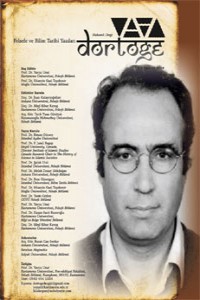Öz
Virginia Woolf 1905 tarihli “Yazınsal Coğrafya” başlıklı makalesinde şöyle der: “Bir yazarın ülkesi, o yazarın zihninde bir bölgedir ve eğer biz bu hayali şehirleri somut tuğla ve harca dönüştürmeye kalkarsak hayal kırıklığına uğrayabiliriz… [bir yazarın kentinin] dünya üzerindeki kentlerden birinde bir karşılığı olduğunu iddia etmek o hayali kentin büyüselliğinin yarısının uçup gitmesine neden olur.” James Joyce ise Frank Budgen ile yaptığı bir sohbette Woolf’unkinden çok farklı bir konum larak şöyle der: “Dublin’in öyle eksiksiz bir resmini sunmak istiyorum ki bir gün kent dünya üzerinden aniden silinirse benim kitabıma bakılarak yeniden inşa edilebilsin.” Bu iki görüş edebiyat tartışmalarında birbiriyle sürekli çatışma içinde olan iki görüşü temsil eder. İlk görüş yazınsal nesnelerin (burada yazınsal kentler) saf imgesel yapılar olduğunu ve materyal gerçeklikten tam anlamıyla bağımsız olduklarını söylerken ikinci görüşe göre ise yazınsal nesneler materyal gerçekliği o kadar iyi temsil eder ki neredeyse onunla özdeştirler. Ben burada iki görüşün de hem doğru hem de yanlış olduğunu savunacağım. Woolf’un Londra’sı Joyce’un Dublin’i kadar gerçek, Joyce’un Dublin’i Woolf’un Londra’sı kadar kurmacadır. Yazınsal metinlerde temsil edilen kentler gerçekliklerini şehri gerçeğe olabildiğince yakın temsil etme kabiliyetlerinden değil, o gerçeği ve bizim o gerçeği algılamamızı yeniden şekillendirme güçlerinden alırlar. İronik bir şekilde bizim algımızdaki kent gerçeği değiştikçe yazınsal yapıtta temsil edilen kent de gerçekliğe daha çok yaklaşır. Burada gerçeklik artık sabitlenmiş bir durum değil, sürekli değişmekte olan bir süreçtir.
Anahtar Kelimeler
Kurmaca Estetik-Kognitif Değer Mimesis Olayörgüleştirme Üretken Gönderim
Kaynakça
- Aristoteles. 2017. Poetika (Şiir Sanatı Üzerine). Çev. Nazile Kalaycı. Ankara: Pharmakon Yayınevi.
- Berksan, Mehmet. 2014. “Mimar Gözüyle Elif Şafak’ın Son Romanı: Ustam ve Ben” Arkitera, 9 Ocak 2014. http://www.arkitera.com/gorus/449/mimar-gozuyle-elif-safakin-son-romani--ustam-ve-ben
- Brady, Joseph. 2015. “James Joyce’s Dublin: a city of contrast [James Joyce’un Dublin’i: bir çelişkiler kenti].” The Irish Times, 9 Haziran 2015. https://www.irishtimes.com/culture/books/james-joyce-s-dublin-a-city-of-contrasts-1.2243035
- Budgen, F. (1972). James Joyce and The Making of Ulysses [James Joyce ve Ulysses’in Oluşumu]. Bloomington: Indiana University Press.
- Canetti, E. (2004). Körleşme. Çev. Ahmet Cemal (Çev.). İstanbul: Payel Yayınevi.
- Gibson, J. (2008). Fiction and the Weave of Life [Kurmaca ve Hayatın Örgüsü]. Oxford: Oxford University Press.
- Melberg, A. (1995). Theories of Mimesis. Cambridge: Cambridge University Press.
- Ricoeur, P. (1991). The Function of Fiction in Shaping Reality [Kurmacanın Gerçekliği Şekillendirmedeki İşlevi]. Mario J Valdés (Ed.), A Ricoeur Reader: Reflection and Imagination içinde (s.117–36). Toronto: University of Toronto Press.
- Şafak, E. (2013). Ustam ve Ben. Omca A. Korugan (Çev.). İstanbul: Doğan Kitap.
- Şafak [Shafak], E. (2015). The Architect’s Apprentice. New York: Penguin Books.
- Woolf, V. (1986). Literary Geography [Yazınsal Coğrafya]. Andrew Mc Neille (Ed.) The Essays of Virginia Woolf içinde. London: Hogarth Press.
Öz
Virginia Woolf in her 1905 essay titled “Literary Geography” writes: “a writer’s country is a territory within his own brain; and we run the risk of disillusionment if we try to turn such phantom cities into tangible brick and mortar . . . to insist that [a fictional city] has any counterpart in the cities of the earth is to rob it of half of its charm”. James Joyce, in contrast, in a letter written to Frank Budgen says: “I want to give a picture of Dublin so complete that if the city one day suddenly disappeared from the earth it could be reconstructed out of my book”. These two positions represent a deep conflict in literary studies. On the one hand, literary objects (here literary cities) are purely imaginative constructions, they are independent from the material reality; on the other, they reflect the material reality so accurately that, it aims to identify with that reality. Here I want to argue that both positions are right and wrong. Woolf’s London is as real as Joyce’s Dublin and Joyce’s Dublin is as fictional as Woolf’s London. The cities depicted in literature are real not because they imitate the material cites in an accurate way, but because they re-shape our cognition of those material cities. However, ironically when our recognition of cities are re-shaped by literature, the city represented in a specific work becomes an accurate representation. Hence, reality here appears not as something fixed, but as something that is always re-shaped, and literature is one of the main means of this kinetic process.
Anahtar Kelimeler
Fiction Aesthetic-Cognitive Value Mimesis Emplotment Creative Reference
Kaynakça
- Aristoteles. 2017. Poetika (Şiir Sanatı Üzerine). Çev. Nazile Kalaycı. Ankara: Pharmakon Yayınevi.
- Berksan, Mehmet. 2014. “Mimar Gözüyle Elif Şafak’ın Son Romanı: Ustam ve Ben” Arkitera, 9 Ocak 2014. http://www.arkitera.com/gorus/449/mimar-gozuyle-elif-safakin-son-romani--ustam-ve-ben
- Brady, Joseph. 2015. “James Joyce’s Dublin: a city of contrast [James Joyce’un Dublin’i: bir çelişkiler kenti].” The Irish Times, 9 Haziran 2015. https://www.irishtimes.com/culture/books/james-joyce-s-dublin-a-city-of-contrasts-1.2243035
- Budgen, F. (1972). James Joyce and The Making of Ulysses [James Joyce ve Ulysses’in Oluşumu]. Bloomington: Indiana University Press.
- Canetti, E. (2004). Körleşme. Çev. Ahmet Cemal (Çev.). İstanbul: Payel Yayınevi.
- Gibson, J. (2008). Fiction and the Weave of Life [Kurmaca ve Hayatın Örgüsü]. Oxford: Oxford University Press.
- Melberg, A. (1995). Theories of Mimesis. Cambridge: Cambridge University Press.
- Ricoeur, P. (1991). The Function of Fiction in Shaping Reality [Kurmacanın Gerçekliği Şekillendirmedeki İşlevi]. Mario J Valdés (Ed.), A Ricoeur Reader: Reflection and Imagination içinde (s.117–36). Toronto: University of Toronto Press.
- Şafak, E. (2013). Ustam ve Ben. Omca A. Korugan (Çev.). İstanbul: Doğan Kitap.
- Şafak [Shafak], E. (2015). The Architect’s Apprentice. New York: Penguin Books.
- Woolf, V. (1986). Literary Geography [Yazınsal Coğrafya]. Andrew Mc Neille (Ed.) The Essays of Virginia Woolf içinde. London: Hogarth Press.
Ayrıntılar
| Birincil Dil | Türkçe |
|---|---|
| Konular | Felsefe |
| Bölüm | Araştırma Makalesi |
| Yazarlar | |
| Yayımlanma Tarihi | 28 Haziran 2019 |
| Gönderilme Tarihi | 26 Mayıs 2019 |
| Yayımlandığı Sayı | Yıl 2019 Sayı: 15 |


